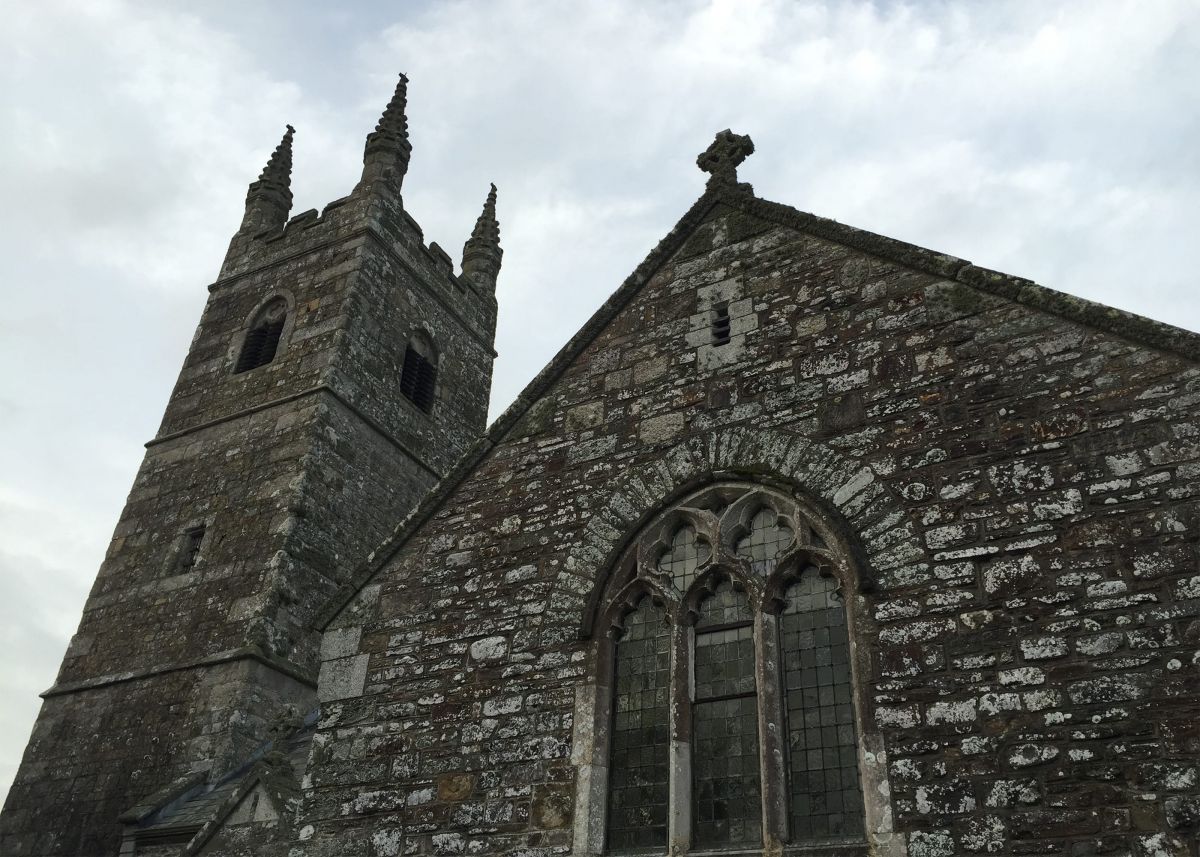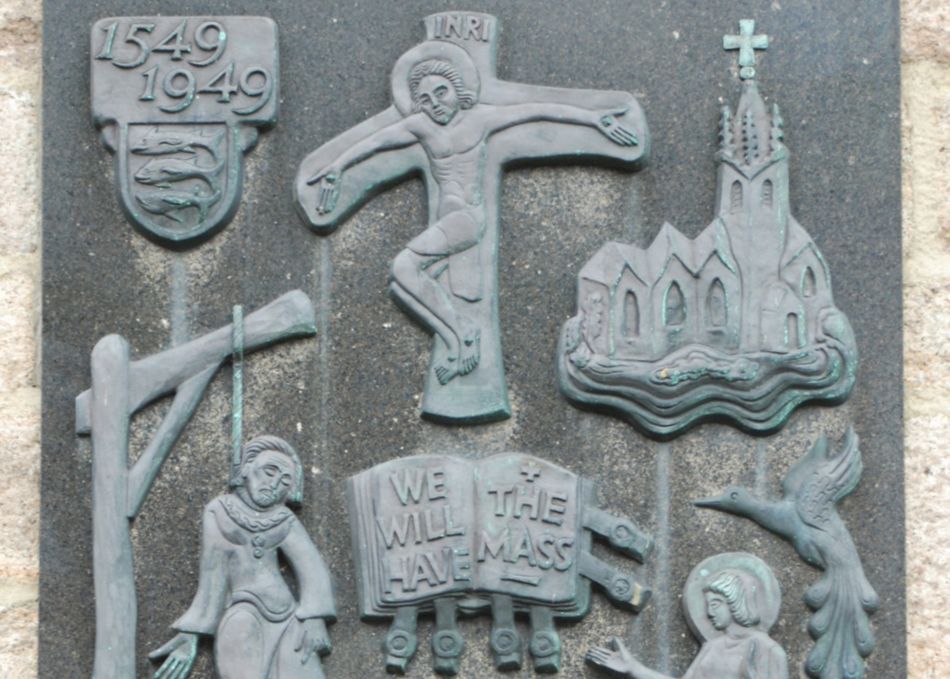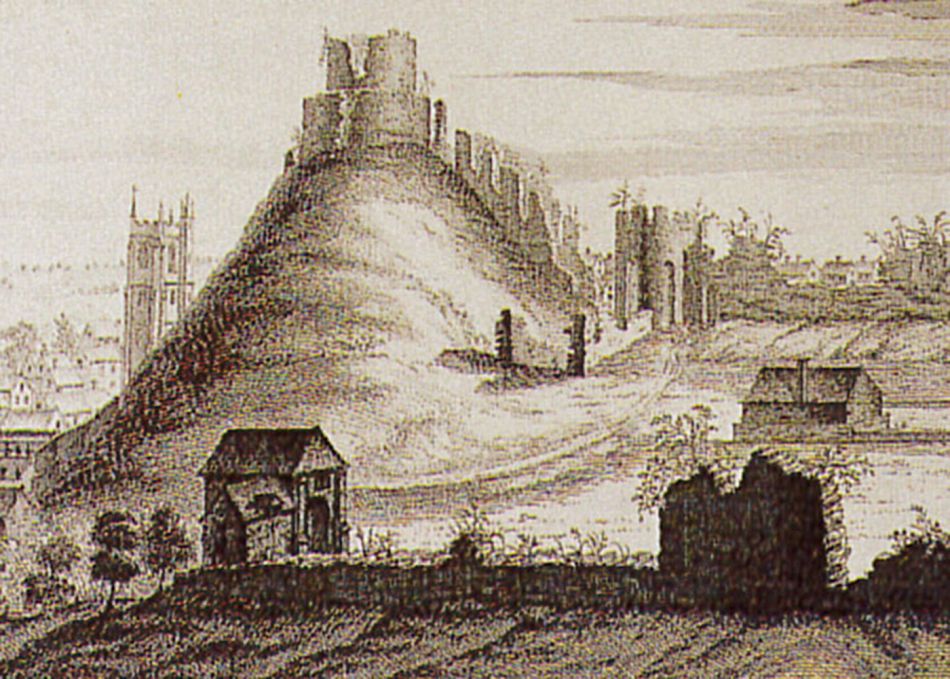The causes of the conflict
1527
The roots of the conflict
At the beginning of the 1500s, countries in western Europe followed the Roman Catholic religion. In 1527, England’s King Henry VIII wanted to divorce his wife Katherine of Aragon. The Pope, who was head of the Roman Catholic Church, would not allow King Henry a divorce. In 1534, the king decided to break away from the Roman Catholic Church and create his own church called the Church of England.
1536
Religious centres forced to close
Between 1536 and 1549 many religious centres in Cornwall were forced to close, including those at Bodmin, Launceston, Crantock, Probus, St Germans, Truro and Tywardreath. Their libraries were destroyed and their land, possessions and money were taken by the king. Much of the land once owned by religious centres (like that at Lanhydrock) was sold to rich men.
1537
Feast days banned
King Henry VIII tried to ban the celebration of saints’ feasts (like St Piran’s Day). A St Keverne fisherman who planned a protest about this was arrested and probably executed (killed) in Launceston. In Truro, a customs officer tried to stop a ship transporting people to Brittany to celebrate a saint’s feast. The Cornish people on the ship pushed the customs officer into the sea.
1538
Pilgrimages banned
The English government ordered that all churches should use an English language Bible. The government also banned pilgrimages (visiting holy places like St Michael’s Mount or St Piran’s Church) and completely banned the celebration of saints’ feasts.
1540
Saints’ shrines destroyed
The king ordered that saints’ shrines (the places where saints’ bones were kept) should be destroyed.
1547
Hospitals, colleges and guilds forced to close
The English government forced chapels, hospitals, guilds and colleges to close. This meant that communities no longer had places where children could be taught, where prayers could be said for the dead, or where the sick and old could be cared for.
King Henry died and his son became King Edward VI. Because Edward was only nine years old, government ministers ruled the country for him. Before he died, King Henry had said that government ministers should not make any changes to religion until his son Edward was old enough to rule for himself.
1548
Glasney College forced to close
The English government forced Glasney College in Penryn to close. The building was destroyed and its possessions taken away.
English government official William Body was stabbed to death in Helston after he tried to remove holy images from the parish church. Twenty-eight Cornishmen were arrested for their part in the stabbing, and ten were executed (killed).
1549
English language prayer book introduced
In 1549, the English government made an English language prayer book for use in all churches. Many people in Cornwall only spoke Cornish and did not understand English. They were very angry that their church service was being changed.

The battles
6th June: A Cornish army
Around 3,000 Cornish people who were angry about the changes to their religion gathered at Castle Canyke just outside Bodmin. They made Humphrey Arundell their commander.
Humphrey sent a letter to the English government asking it to stop the religious changes and to remove the English prayer book. The Cornish army said that it was loyal to King Edward VI, but the English government must wait until the king was old enough to make his own decisions about religion.
9th June: Trouble in Devon
In Sampford Courtenay in west Devon, people forced their vicar to use the old religious service and not the new prayer book. A man who supported the new prayer book was killed outside the church. People from across west Devon formed their own army and marched to Exeter.
Trematon Castle, Plymouth and Exeter
The Cornish army prepared to march to London (like it had in 1497). Humphrey Arundell wanted to meet with the English government and demand an end to the religious changes. The Cornish army captured Trematon Castle, near Saltash, and Plymouth in Devon.
June: Exeter surrounded
The Cornish army reached Exeter and joined with the Devon army. The two armies besieged (surrounded) Exeter for the next five weeks. They tried to dig under the city walls to blow them up, but rain made their gunpowder too wet.
The English government put Lord John Russell in charge of stopping the Cornish and Devon armies from reaching London. Lots of soldiers were sent to Exeter by the government. These included professional soldiers from Germany and Italy.
London in a panic
News that a Cornish army was marching to London caused panic. Orders were given to pull down bridges across the River Thames to stop the Cornish army from reaching London. The performance of plays in London was banned in case they stirred people up against the government. France declared war on England.
Another letter from Humphrey Arundell
Humphrey Arundell and the other leaders of the Cornish and Devon armies sent another letter to the English government, asking again to stop the changes to religion. The letter said that Cornish people could not understand the new English language prayer book and church service:
Item – we will not receive the new service because it is but like a Christmas game, but we will have our old service of matins, mass, evensong and procession in Latin as it was before. And so we the Cornishmen (whereof certain of us understand no English) utterly refuse this new English From the letter or ‘Articles’ from the Cornish and Devon armies to the English government (June 1549)
24th July: Government replies to Humphrey Arundell
The English government sent three replies to Humphrey’s letter. Each reply refused to agree to Humphrey’s demands. The third reply was written by a man called Nicholas Udall. Udall had been sacked from his job as headmaster of Eton school for abusing pupils.
28th July: Battle of Fenny Bridges
The first battle of the Prayer Book Conflict took place at Fenny Bridges on the road between Exeter and Honiton. The Cornish and Devon armies fought the English government soldiers led by Lord Russell. Several hundred Cornish and Devon people were killed in the battle.
4th August: Battle of Woodbury Common
The Cornish and Devon armies next attacked government soldiers at their camp near a windmill on Woodbury Common, south of Exeter. The government soldiers won the battle and the Cornish and Devon armies lost more soldiers.
5th August: Battle of Clyst St Mary and the killing of prisoners
Government soldiers set fire to the village of Clyst St Mary, south of Exeter, and drove the Cornish and Devon armies out. As they ran from the burning buildings, many Cornish and Devon soldiers were killed or taken prisoner. Because the government soldiers had taken so many prisoners, they were worried that they might not be able to control them all. Instead, the order was given to kill all of the prisoners – probably several hundred men.
6th August: Battle of Clyst Heath
The killing of so many prisoners made the Cornish and Devon armies very angry. A large and bloody battle took place on Clyst Heath, with many soldiers killed on both sides.
17th August: Battle of Sampford Courtenay
The final full battle of the Prayer Book Conflict took place at Sampford Courtenay in mid-Devon. Around 1,400 Cornish and Devon soldiers were killed; others were taken prisoner or fled home to Cornwall. The English government, with help from foreign soldiers, had finally defeated the Cornish and Devon armies.
19th August: The capture of Humphrey Arundell
Humphrey Arundell’s servant, John Kessell, told the government where Humphrey was hiding. Humphrey was captured and taken to London.
After the conflict: August 1549 – January 1550
The English government sent a cruel man called Sir Anthony Kingston to Devon and Cornwall. Kingston asked the Deputy Mayor of Bodmin to build a gallows (a structure for hanging people) and then invited him for dinner. At the dinner, Kingston asked his guest if the gallows were built well. When the Deputy Mayor said that they were, Kingston replied “that is good because I am now going to hang you from them”. He played the same cruel trick with a town leader in St Ives.
Sir Anthony Kingston…was deemed by many not only cruel but uncivil and inhumane in his executions Sir John Hayward, The Life and Reign of King Edward the Sixth (1630)

Kingston and government soldiers killed hundreds of people as a punishment for taking part in the conflict. Six vicars were hanged including those from Poundstock and St Neot in Cornwall. It is likely that Kingston and his soldiers also killed many people who had not taken part.
The church accounts for Stratton in north Cornwall seem to show that two carpenters were paid for making and setting up gallows to hang people including Simon Morton, the vicar of Poundstock:
Item: Paid to John Mock for making of the… – 4 pence
Item: Paid to Thomas Clarke for helping them up – 2 pence
Account Book of the Stockwardens of Stratton (1549)
Land belonging to the leaders of the Cornish and Devon armies was taken from them and given to the officials who had led the government soldiers.
Cornish culture and Cornwall’s connections with Catholic Brittany suffered very much as a result of the conflict. The Cornish language declined, with fewer people speaking it. Saints’ day celebrations were stopped and stained glass and ornaments in Cornish churches were destroyed. The organisations that had supported Cornish society – chapels, hospitals, guilds and colleges – were all closed. Maps no longer showed Cornwall as a separate nation.














